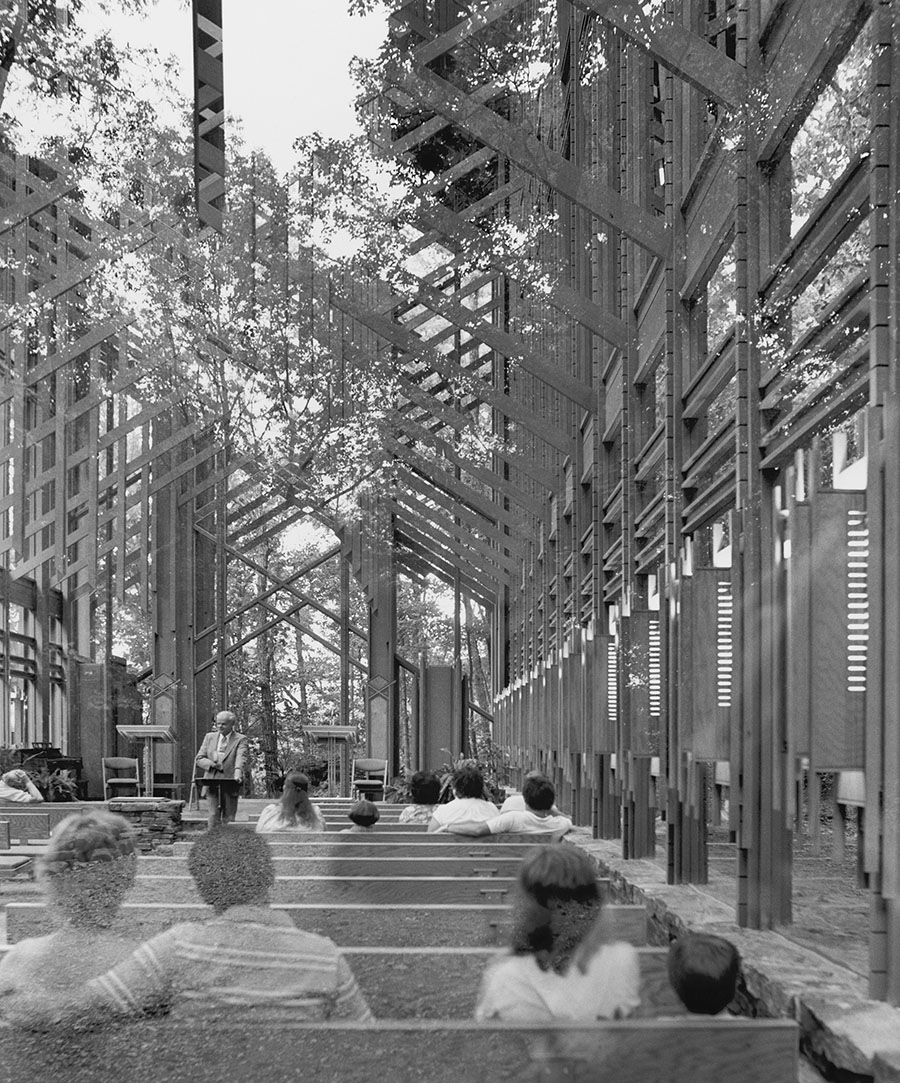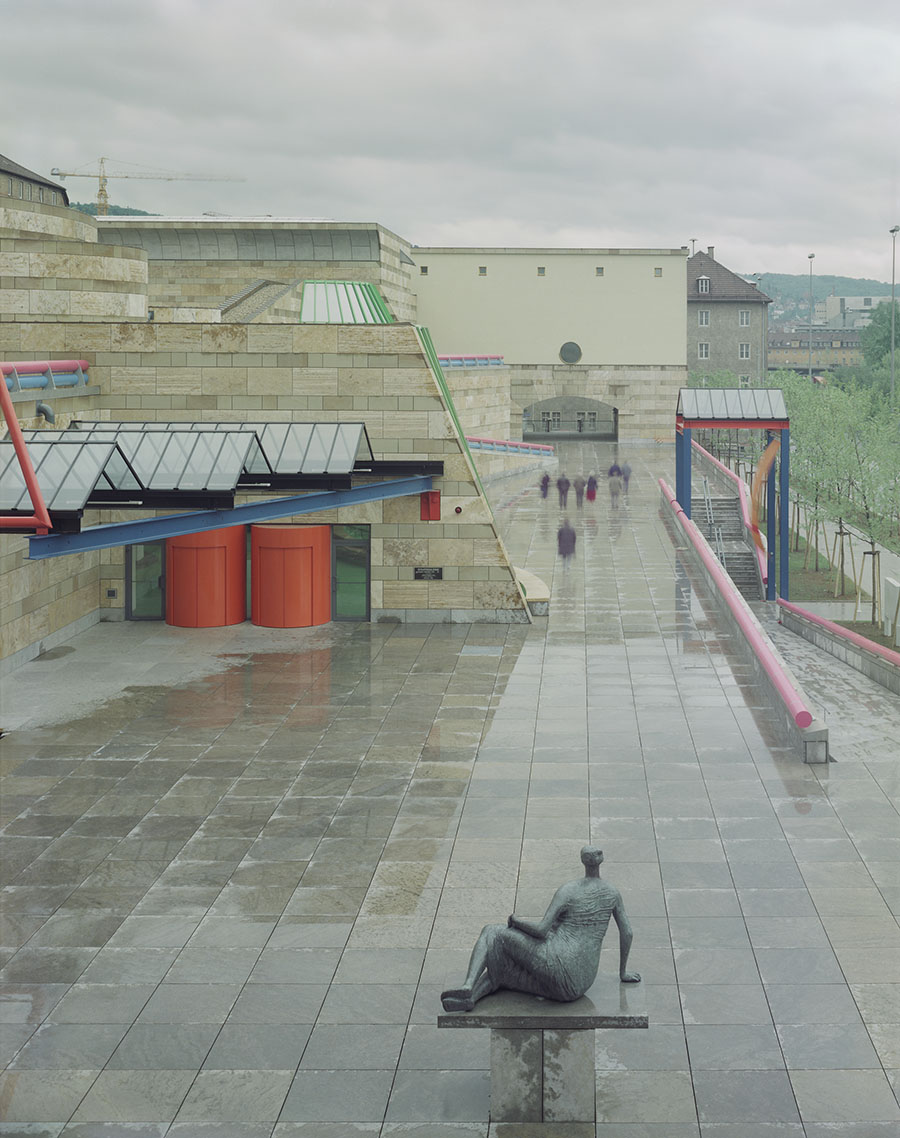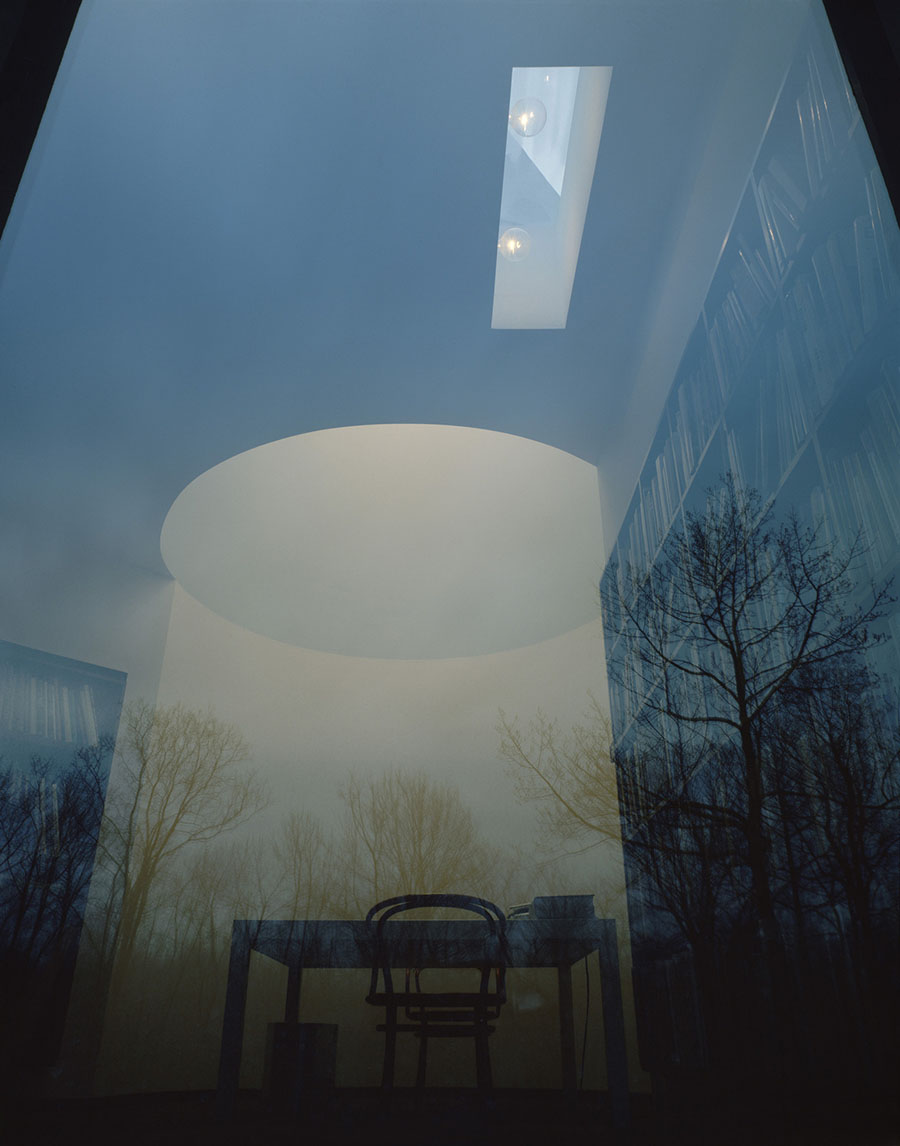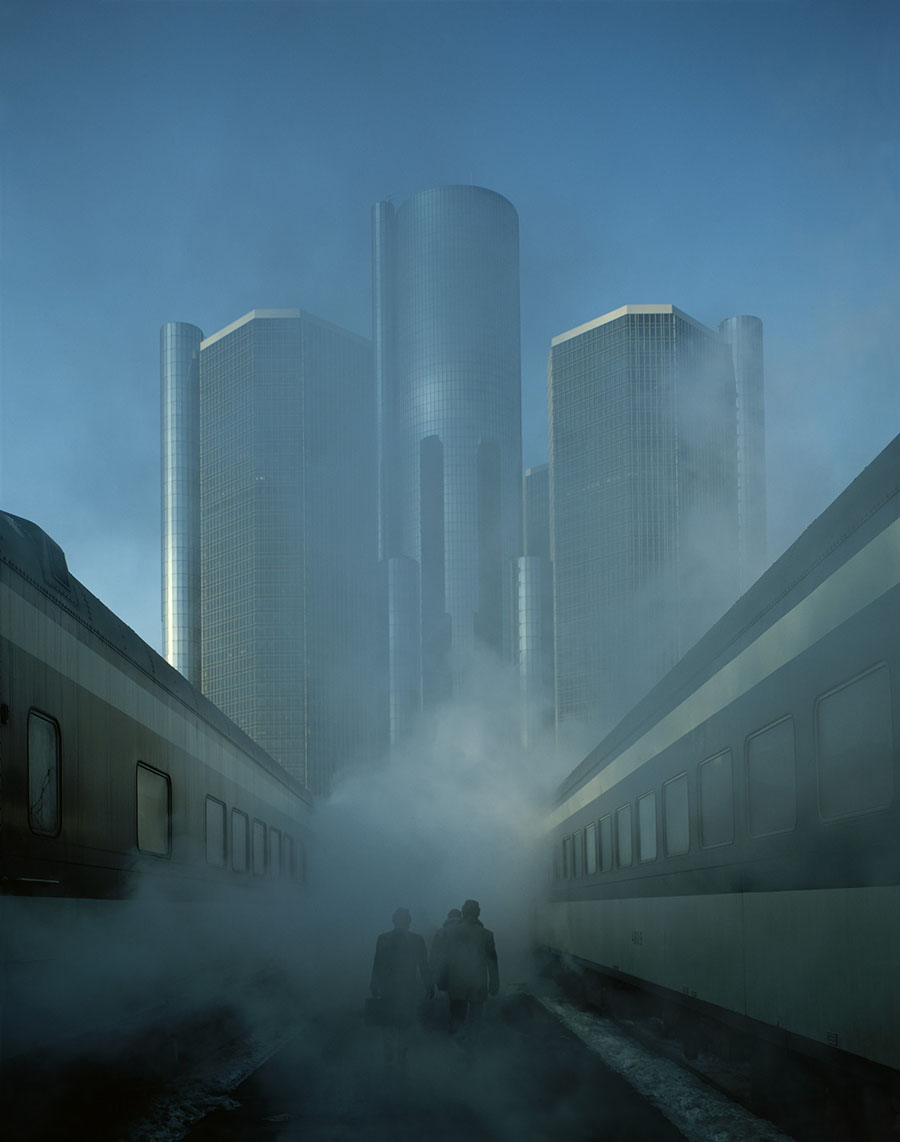
In 1979, the Museum of Modern Art chose an image taken by Tim Hursley to use on the materials for an architecture exhibit, “Transformations in Modern Architecture.” The image is of the Renaissance Center in Detroit, designed by the architect John Portman.
By Michelle Parks
Once a newly designed building is constructed, it’s often photographed and seen worldwide in print and online publications. Some of those images were first seen through the eyes and lens of Tim Hursley, an architectural photographer based in Arkansas.
He stumbled into the profession, but, 35 years later, can’t imagine what he’d be doing otherwise.
Hursley grew up in Birmingham, a Detroit suburb, among nine siblings. His brother, Greg, worked briefly with Balthazar Korab, a Hungarian-born photographer who was one of few architectural photographers then. Once a designer with Eero Saarinen, the Finnish architect and industrial designer responsible for the Gateway Arch in St. Louis, Korab later went into photography.
At 17, Hursley did yard work for Korab, but that evolved into a long-term photographic apprenticeship, as Hursley became the first photographer to work for him full time.
“Just like anything, you have to get interested in it. If I didn’t get interested in what was going on there, I would have left or I would have been asked to leave,” Hursley said. “It wasn’t conscious, trying to be an architectural photographer or a photographer. And slowly, but surely, I got interested.”
Hursley’s education came through the apprenticeship rather than college. He developed many professional contacts during that time and was getting assignments directly from Architectural Record.
Early on in his career, one book made a big impression on him: St. Louis and the Arch, featuring work by Joel Meyerowitz. Hursley saw that architectural photography could be fine art photography.
In 1979, the Museum of Modern Art chose a Hursley image to use on the materials for an architecture exhibit, “Transformations in Modern Architecture.”
“When you have that kind of stuff happening when you’re young, it can propel your dreams,” he said.
He has since traveled the world taking photos, amassing work that earned him an Honor Award for architectural photography from The American Institute of Architects in 1990, along with a 2015 Award of Merit from AIA Arkansas. His twin sons, Dylan and Evan, who actually started as physics majors but are now both Fay Jones School architecture students, recently won accolades in a national design competition.
Moving south
When Hursley first visited Arkansas around 1979, he visited Thorncrown Chapel, the Fay Jones design in Eureka Springs. He took some casual snapshots of the new structure and shared them with architecture magazine contacts. The images show a service in progress, with owner Jim Reed sitting in the pews, as the preacher speaks.
“They’re some of my favorite photographs of Fay’s work that I did,” he said. (His brother, Greg, got the official assignment for the first published photographs of Thorncrown.)
Those early images are on Hursley’s website (www.timothyhursley.com), which he recently updated to be a gallery of his work rather than only a splash page. It also includes various design projects he’s photographed, plus a dilapidated silo he bought and documented with time-lapse photography.
Hursley moved to Arkansas in 1980 and worked with his brother for a year in Little Rock, where he also established his studio, The Arkansas Office.
As an architectural photographer, Hursley aims to capture the expressions of inanimate objects. Though different from living subjects, they are characters with personalities and distinguishing traits. Through his work, he gives them life and motion and sometimes drama.
He interprets what each architect has created – reading how the form integrates with the landscape, how light filters through, how its pieces fit together to make the whole. He also notes what architects want to see from their own creations.
He likes to see “the marriage of the details, the layering of details.” Taken as a whole, the photography becomes a sort of portrait of the architect.
“I’ve had so many great opportunities working with great buildings. I always think that architects are great artists,” he said. He’s simply trying to render their work through his lens.
Following the light
His days typically start early and can run long – often arriving and leaving in the dark. “I’m watching the light and the forms. There’s a certain amount of looking for the best moments. I always like to say that I want to stay ahead of the light and anticipate the light,” he said.
He considers many factors, sometimes all at once: the position and quality of sunlight, the evolving shadows, the distance between his camera and his subject, and its context within the surroundings. He decides which is the best dramatic wide shot and which is the best close-up detail.
Through images, he can show aspects about a structure that people might not see on their own. He observes and analyzes light, studies changes and stalks special moments.
“If you’re not constantly engaged and watching the light and the building, you’re going to miss those moments.” When he sees a shot with details and layers, “that’s when it’s at its best, to me.”
Hursley used a large format film camera until late 2011, when he officially switched to large format digital. His first assignment with digital: photographing the newly completed Crystal Bridges Museum of American Art, by Moshe Safdie.
Hursley has worked with Safdie over the years, including a trip about five years ago to Singapore, where he and an assistant went to capture the Marina Bay Sands. It was Hursley’s third trip to Singapore, and he took both film and high-end digital cameras. That trip was more difficult because they had to manage both systems.
When Hursley returned from the trip, he was sold on switching to digital.
On assignment
Traveling is a constant part of Hursley’s photography career.
In September, Hursley went to South Korea on assignment to photograph the Asian Culture Center, located two hours south of Seoul in Gwangju. The location chosen for this center was the site of a democratic uprising that occurred in 1980, during which several hundred students who were protesting were attacked and killed by government troops.
This was Hursley’s fifth or sixth time in South Korea. He and his assistant stayed in a cheap hotel close to the site, so they could walk there in five minutes and also better understand the context of the area. They spent six days on foot at the site, working from 5:15 a.m. to 7 p.m., and then walking back to the hotel, finding some food along the way.
The site for this complex is the length of a football field, with a plaza area and some buildings that were left behind. The project’s designer, Kyu Sung Woo, who is a Korean architect based in Boston, decided not to do an object. Instead, the elements of the project – including archives and a children’s museum – are underground. The main view is of the street level with most of built spaces covered in green space.
Hursley experimented for the first time with using drones to photograph a project. He could have used a helicopter, but “a drone is the craze,” he said.
In his career, Hursley also studied and followed some subjects enough that the work has resulted in exhibits and books. Those subjects included Andy Warhol’s last Factory in New York City, which he photographed in the early 1980s for Progressive Architecture magazine.
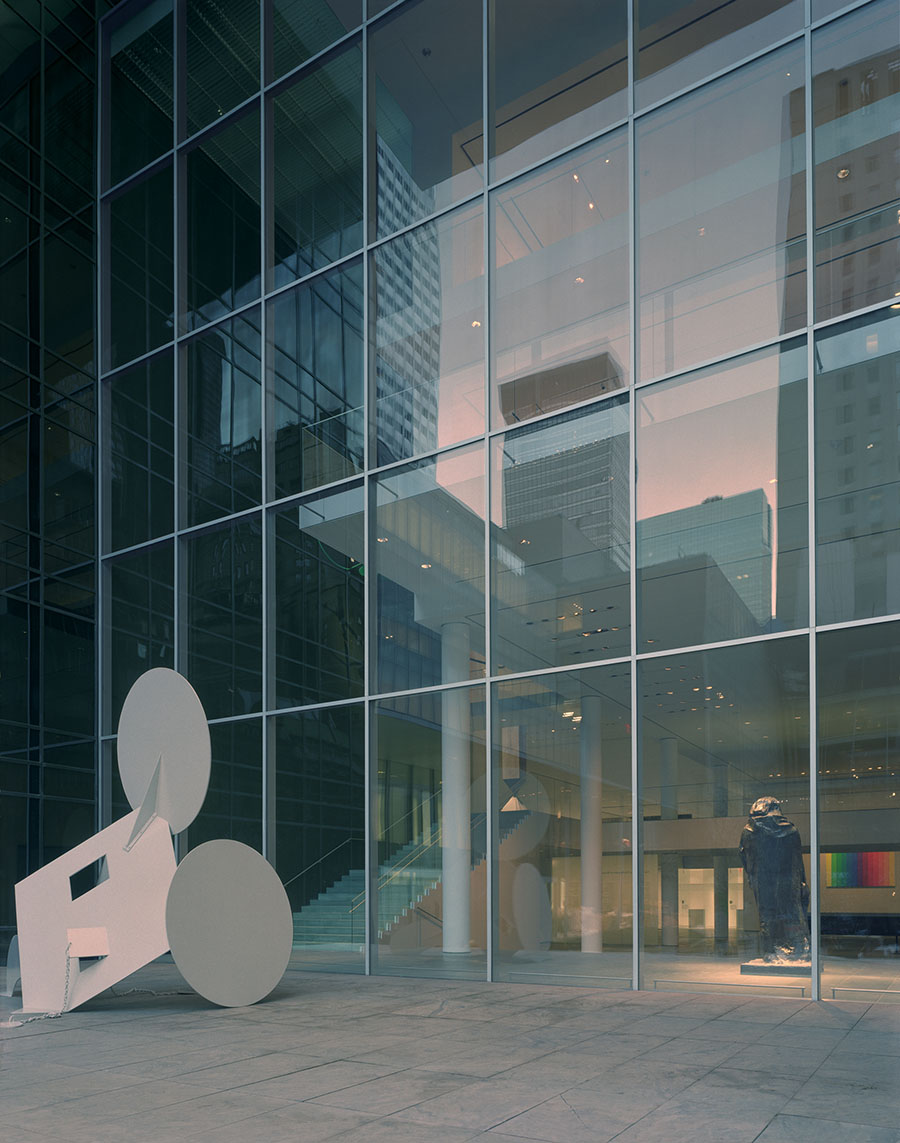
The Museum of Modern Art (MoMA) in New York, designed by the architect Yoshio Taniguchi. (Photo by Tim Hursley)
Hunting for subjects
Hurley doesn’t usually hit the road and look for things that catch his eye to photograph. He likes to go to a location and mine it for possibilities. He likes to find a subject that interests him, and then just immerse himself to find the layers that exist and see what develops.
From that Warhol project, he stumbled on a new subject: the legal brothels in Nevada. He was in Las Vegas and heard that prostitution was legal. He looked into it, and started photographing the structures – both exteriors and interiors.
He had seen a book of work by a New Orleans photographer, Clarence John Laughlin, who had taken a series of photographs in the 1940s of plantation homes across Mississippi, most of them in disrepair. Though working with very different subjects, Hursley carried that inspiration and concept with him as he explored and captured the Nevada brothels.
Between 1985 and 1990, he found 25 places that worked well for his aesthetic approach, to “go to a place and see what I could find.” The brothels – both operating and abandoned brothels – were really no different from other architectural subjects, except that they were “charged with the layer of, this is taboo and tacky.”
The brothels are architectural, but the spaces have particular histories, stories and perceptions. They were gritty and real, he said, and photographing them might have been a bit rebellious to what the fine art and upscale home magazines were featuring at the time.
In 1990, Ivan Karp hosted an exhibit in New York City of Hursley’s Nevada brothel photographs at the OK Harris gallery. He revisited those brothels in 2001 and published a collection of the work in Brothels of Nevada: Candid Views of America’s Legal Sex Industry (Princeton Architectural Press).
His interest in very real subjects brought him to focus on the work of architect Samuel Mockbee with the Rural Studio in Alabama. The studio is the design-build program of Auburn University, which teaches students about the social responsibilities of architects while providing homes and other structures for the area’s poor communities. That ongoing project over two decades has resulted in two books: Rural Studio: Samuel Mockbee and an Architecture of Decency, published in 2002, and Proceed and Be Bold (2005). Hursley is working on a third volume celebrating 20 years of the Rural Studio.
An eye to the past
While in Alabama, he also stumbled upon a silo that was going to be torn down. He liked its sculptural form on the landscape and bought it, renting the property it stands on. Sculpture can sometimes be hard for people to relate to, but he thought they could easily understand this form and connect to it.
Then, he set up a surveillance camera for a while to observe the changing weather – “it became a form of photography.” That video is on his website. His photographs of the silo were included in the book Small Architecture Now! (Taschen).
When he’s not on assignment, he spends much of his time driving through the South, scouring roadside shops for antiques – “American artifacts.” He’s in search of interesting objects, though many of them have strong design elements, such as vintage signs, farm instruments and industrial objects. Some are unusual: a shirt collar display from a department store and a gristmill wheel.
When traveling those back roads, he’s usually still taking snapshots of buildings.
Hursley feels fortunate to have been lifted into this profession and guided through the design world. Early editorial connections set him up well for the career that was to come, and the architectural work remained satisfying enough that he didn’t need to look beyond it.
Because of this career he fell into, he’s particularly tuned in to his surrounding landscape wherever he goes. “The built environment, I’m sensitive to it, no matter where I am, and it can be the simplest of places, even in a small town in Arkansas.”
